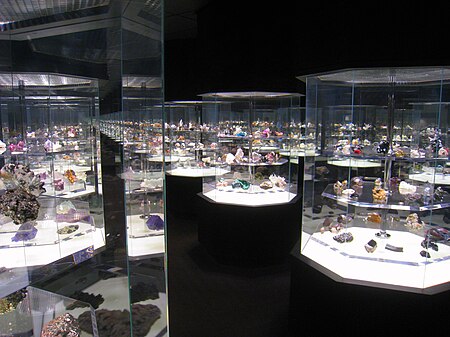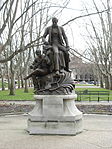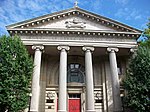Hillman Hall of Minerals and Gems
AC with 0 elementsCarnegie Museum of Natural HistoryGeology museums in the United States

The Hillman Hall of Minerals and Gems is a notable mineral and gem collection within the Carnegie Museum of Natural History in Pittsburgh, Pennsylvania. Comprising over 1,300 specimens, Hillman Hall has gained a reputation as one of the finest mineral exhibitions in the United States
Excerpt from the Wikipedia article Hillman Hall of Minerals and Gems (License: CC BY-SA 3.0, Authors, Images).Hillman Hall of Minerals and Gems
Forbes Avenue, Pittsburgh
Geographical coordinates (GPS) Address Website Nearby Places Show on map
Geographical coordinates (GPS)
| Latitude | Longitude |
|---|---|
| N 40.44364 ° | E -79.95111 ° |
Address
Carnegie Music Hall
Forbes Avenue
15213 Pittsburgh
Pennsylvania, United States
Open on Google Maps







